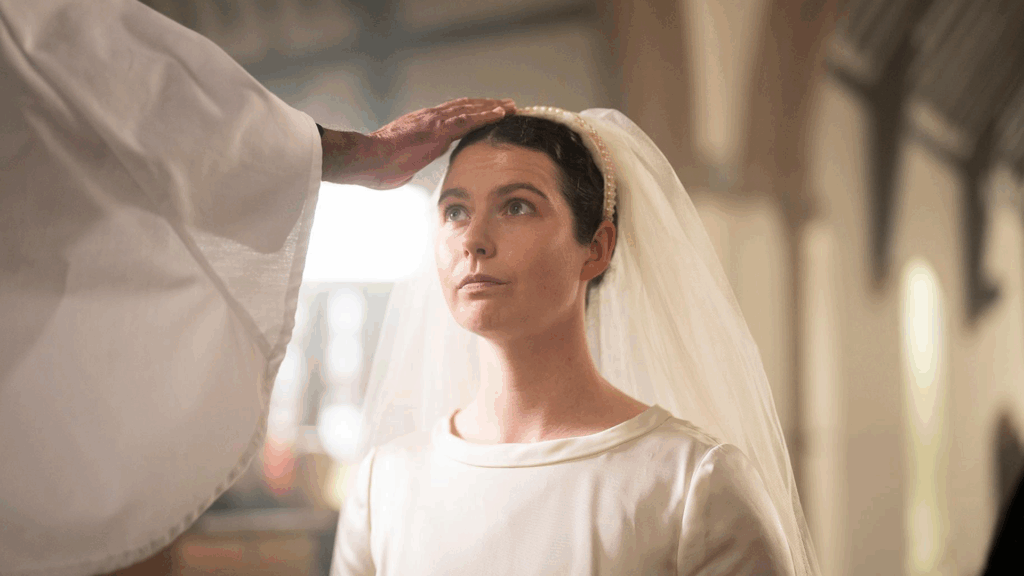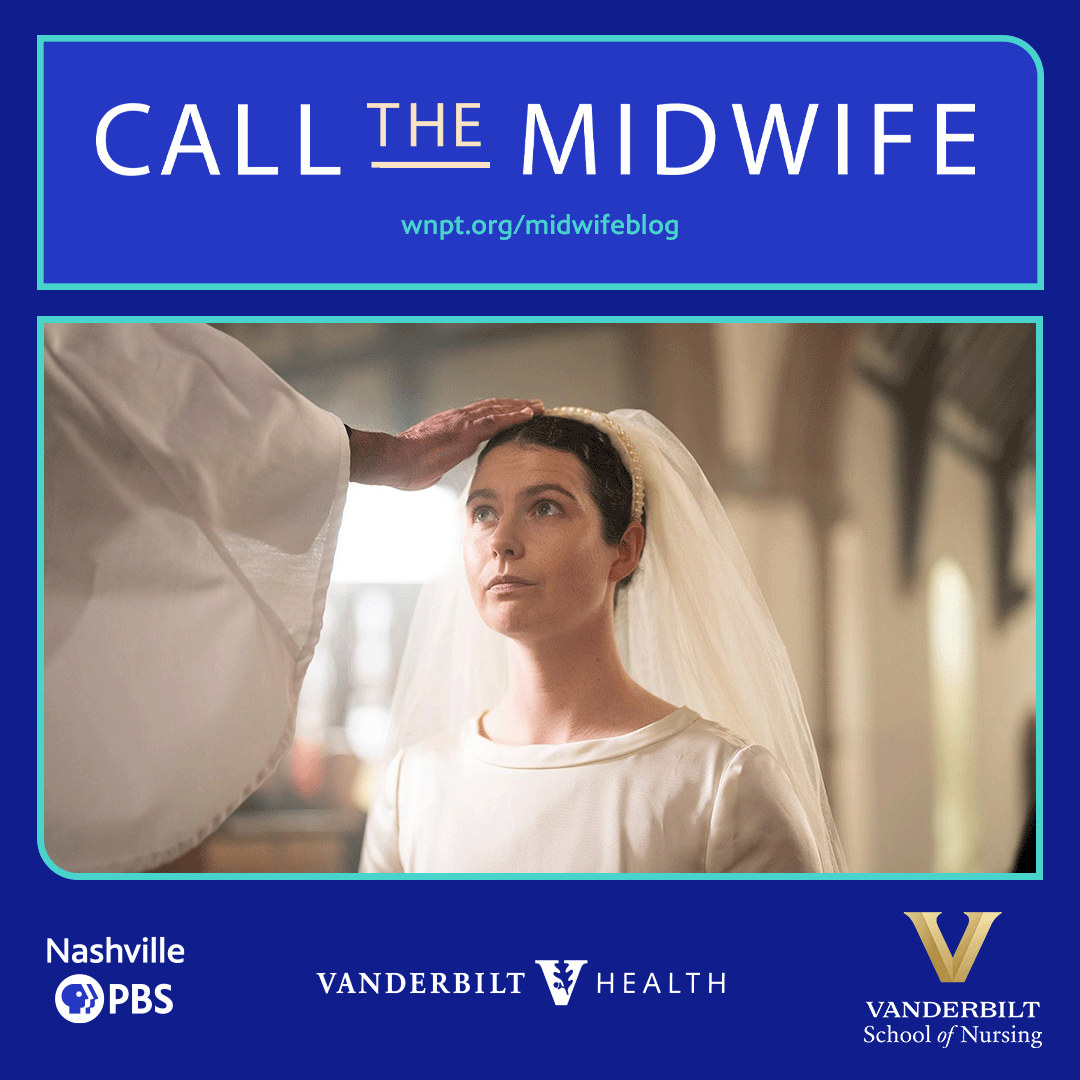
Another season of Call the Midwife comes to a close, and per usual, there’s a lot of joy in the finale as different story lines from throughout the season wrap up. Sister Catherine decides to join the order and has a small reconciliation with her family. Nancy and Roger get married (and have a baby!). Cyril and Rosalind’s relationship blooms. And a young teenage mother, Paula, returns to Poplar when the home for unwed mothers where she was living burns down.
I was so glad to see Paula return. I was curious what would happen to her and her family after she was sent away. In the finale, she struggles with the idea of labor and then struggles through labor itself. It’s clear both her mind and her body had a hard time coping with the very adult act of childbirth, and in the end, she needed the assistance of forceps to deliver the baby. Later in the episode, when Paula’s mother meets her grandson for the first time, the bruises from the forceps were visible on his face. This was such a small detail, but it’s details like that that make the show feel so authentic.
I general, I think Call the Midwife does a great job of realistically portraying childbirth. The actresses portraying these birthing mothers make the most authentic noises during birth. At the birth center where I work, we don’t have the option for epidural anesthesia, so all our patients give birth just like the women of Poplar with no medication other than some nitrous oxide at times. I’ve heard all sorts of noises during labor and can attest to the legitimacy of the labor scenes in the show.
Also, Call the Midwife uses actual newborns in the birth scenes. In most TV shows and movies, the babies being born are acted by what appear to be 4- to 6-month-old babies. But on Call the Midwife, these babies are clearly true newborns, less than a month old. They come out scrawny and covered in fluid the way real babies do.
The biggest difference I see between the babies born on the show and the babies born in real life is their color. In the womb, babies’ oxygen saturation is only 30% to 70% in contrast to our 95% to100% outside the womb. It’s that high level of oxygenation that gives skin a pinkish glow. So, when a baby is born it’s very normal for them to be blue or purple for the first minute or two of life as their lungs start to work for the first time and bring up their oxygen saturation. All the babies on Call the Midwife come out rosy and well-perfused looking because though true newborns, they are more than a few minutes old. If that’s the biggest flaw I can find in the birth scenes though, they’re doing a pretty good job.
I’m already looking forward to Season 15. It seems like more change is coming to Poplar and Nonnatus House, but I have faith the midwives and the community will continue to charm us and bring us joy despite their challenges.

Lila Humbert, CNM, began practice as a certified nurse-midwife in 2018. Her entire midwifery career has been at Vanderbilt Birth Center.

